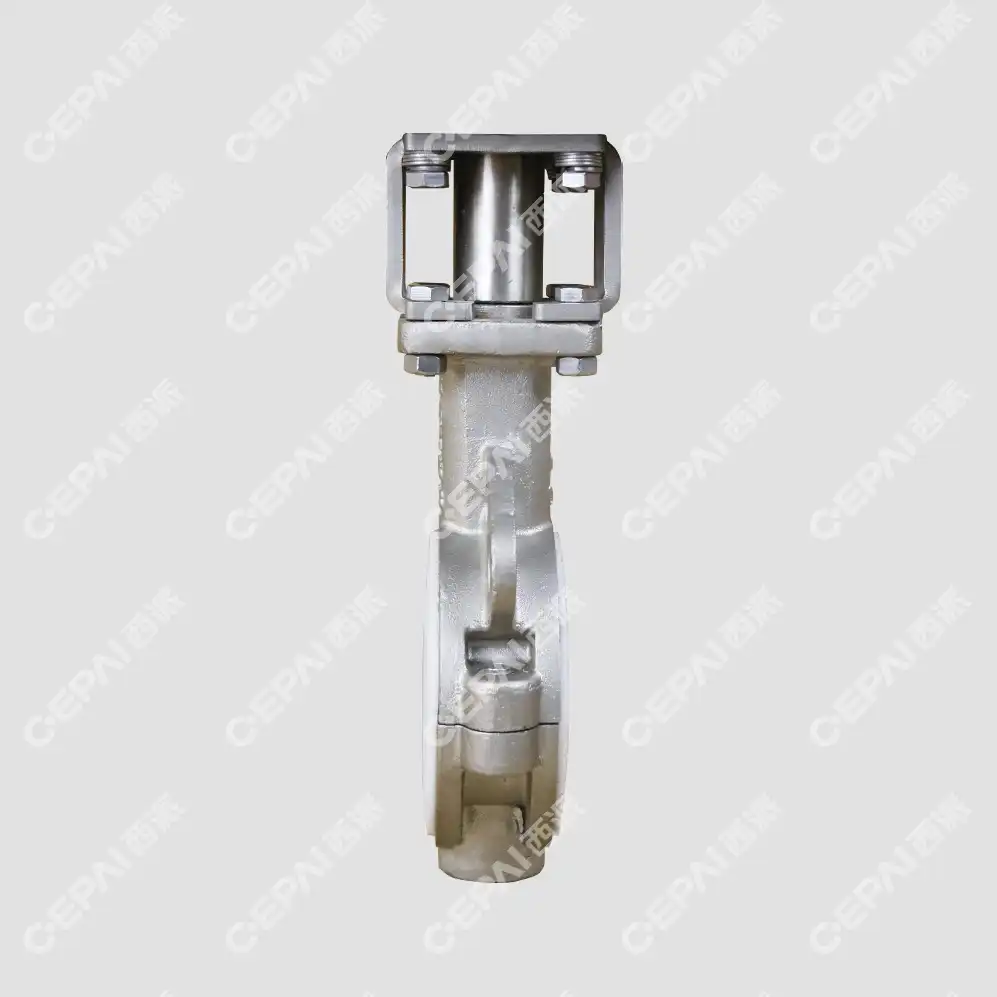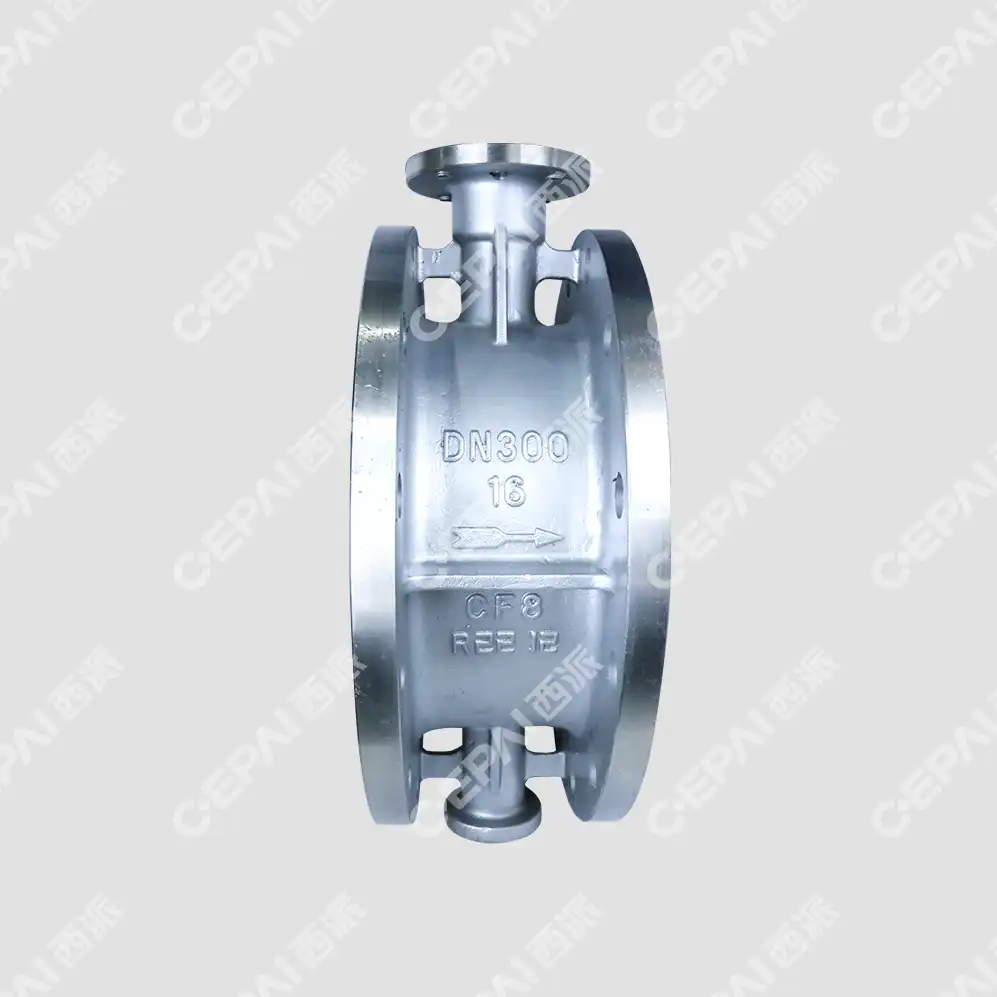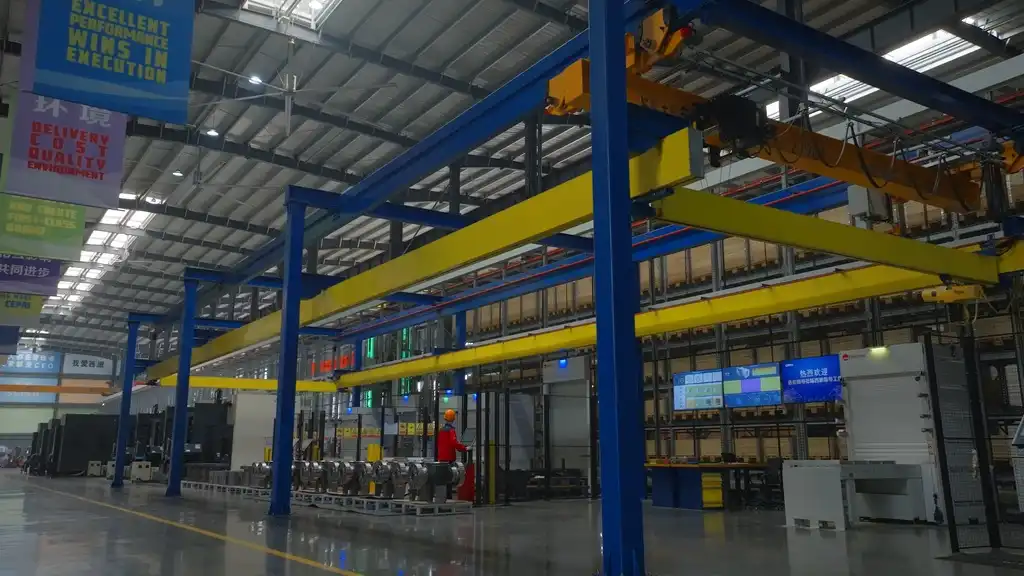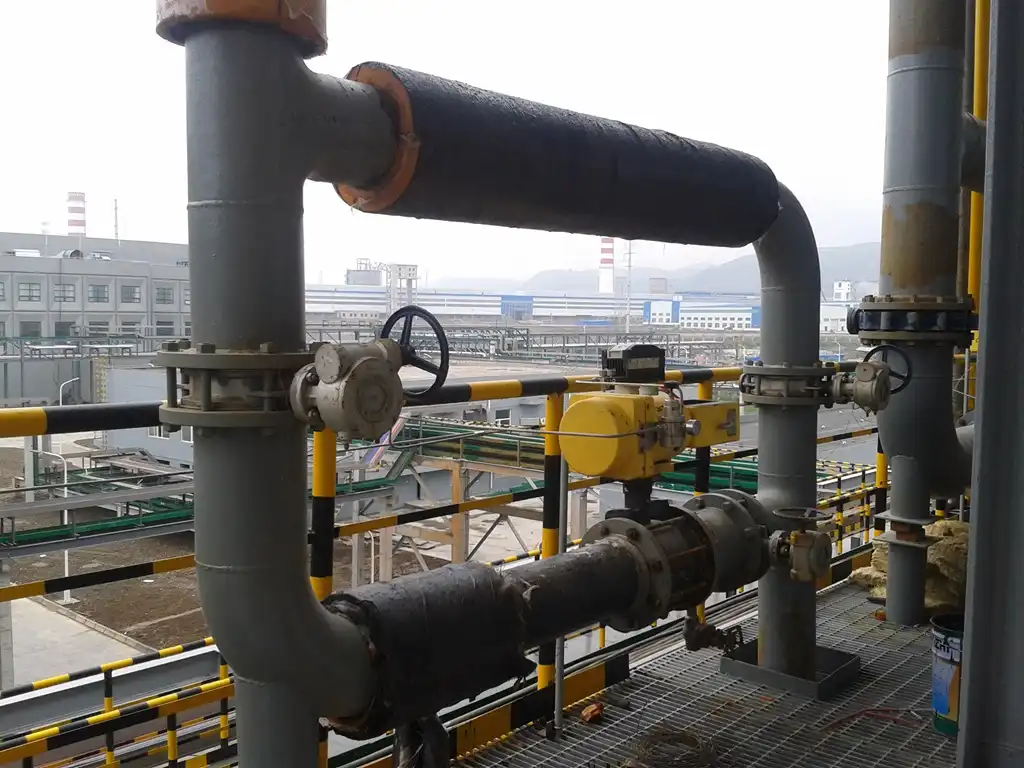Understanding PTFE-Lined Butterfly Valves
Structural Components and Design Features
PTFE-lined butterfly valves consist of a disc-shaped closure element that rotates on a shaft to control flow. The valve body is lined with PTFE, a synthetic fluoropolymer known for its exceptional chemical resistance and non-stick properties. This lining extends to cover the disc, ensuring complete protection against corrosive media. The design incorporates a resilient seat, often made of elastomers like EPDM or FKM, which provides a tight seal when the valve is closed. The shaft is typically constructed from high-strength materials such as stainless steel or Hastelloy to withstand operational stresses.
Material Properties of PTFE and Their Benefits
PTFE, or polytetrafluoroethylene, boasts an impressive array of properties that make it ideal for valve lining. Its chemical inertness allows it to resist attack from almost all chemicals, acids, and solvents. The material's low coefficient of friction reduces torque requirements, facilitating smooth operation. PTFE's non-stick nature prevents buildup of process media, maintaining consistent flow characteristics over time. Additionally, its wide temperature range tolerance (-100°F to 400°F) enables use in diverse process conditions. These properties collectively contribute to the longevity and reliability of PTFE-lined butterfly valves.

Operating Principles and Flow Control Mechanisms
PTFE-lined butterfly valves operate on a quarter-turn principle, where a 90-degree rotation of the disc transitions the valve from fully open to fully closed. In the open position, the disc aligns with the flow, offering minimal resistance. As the disc rotates towards the closed position, it gradually restricts flow until it seals against the seat. This design allows for precise flow control and quick shut-off capabilities. The PTFE lining ensures that all wetted parts remain protected throughout the valve's range of motion, maintaining integrity even under high-velocity or turbulent flow conditions.
Advantages of PTFE-Lined Butterfly Valves in Industrial Applications
Superior Corrosion Resistance and Chemical Compatibility
The primary advantage of PTFE-lined butterfly valves lies in their exceptional resistance to corrosion and chemical attack. The PTFE lining acts as an impermeable barrier, protecting the valve's metal components from contact with aggressive media. This feature is particularly valuable in industries handling acids, caustics, and other corrosive substances. The valves maintain their integrity even when exposed to highly reactive chemicals that would rapidly degrade conventional valve materials. This superior protection translates to extended service life and reduced maintenance frequency, ultimately lowering the total cost of ownership for process equipment.
Enhanced Sealing Performance and Leak Prevention
PTFE-lined butterfly valves excel in providing reliable sealing performance. The combination of the resilient seat and the PTFE-coated disc creates a tight, bubble-tight seal when closed. This design effectively prevents leakage, a critical factor in applications involving hazardous or valuable process fluids. The non-stick nature of PTFE also contributes to consistent sealing over time by resisting the accumulation of deposits that could compromise valve closure. Moreover, the material's inherent flexibility allows it to conform to slight imperfections in the sealing surface, maintaining effectiveness even under varying temperature and pressure conditions.
Low Maintenance Requirements and Extended Service Life
The durability and chemical resistance of PTFE-lined butterfly valves significantly reduce maintenance needs compared to traditional valve types. The non-reactive nature of PTFE prevents corrosion and scaling, eliminating the need for frequent cleaning or replacement of internals. The smooth surface of PTFE also minimizes friction and wear, reducing the likelihood of mechanical failures. These factors contribute to an extended service life, often measured in years or decades, even in harsh operating environments. The reduced maintenance frequency not only lowers operational costs but also minimizes process downtime, a crucial consideration in continuous production facilities.
Common Use Cases and Applications
Chemical Processing and Petrochemical Industries
In chemical processing and petrochemical industries, PTFE-lined butterfly valves play a vital role in managing corrosive and reactive substances. These valves are employed in processes involving acids, alkalis, and organic solvents, where their chemical resistance is paramount. They are commonly used in reactor feed lines, product transfer systems, and waste treatment facilities. The valves' ability to handle a wide range of chemicals makes them versatile components in multi-purpose plants, reducing the need for specialized valve inventories. Their reliable sealing properties also contribute to process safety, preventing leaks of hazardous materials.
Pharmaceutical and Biotechnology Manufacturing
The pharmaceutical and biotechnology sectors benefit from the cleanliness and inertness of PTFE-lined butterfly valves. These industries require valves that do not contaminate or react with sensitive compounds. PTFE's non-stick surface prevents product buildup and facilitates easy cleaning, crucial for maintaining purity in drug manufacturing processes. The valves are used in fermentation systems, API production lines, and purification processes. Their smooth internal surfaces minimize areas where bacteria could accumulate, supporting compliance with stringent hygiene standards. Additionally, the valves' compatibility with cleaning-in-place (CIP) and sterilization-in-place (SIP) procedures enhances operational efficiency in sterile processing environments.

Food and Beverage Production Facilities
PTFE-lined butterfly valves find extensive application in food and beverage production due to their sanitary properties and chemical resistance. They are used in handling various food-grade acids, flavorings, and colorants without risk of contamination or flavor alteration. The valves' smooth internal surfaces prevent product accumulation and facilitate thorough cleaning, crucial for maintaining food safety standards. In beverage processing, these valves manage the flow of carbonated liquids, syrups, and cleaning solutions. Their ability to withstand frequent cleaning cycles with caustic solutions makes them ideal for maintaining hygiene in processing lines. The valves' reliable sealing also helps preserve product quality by preventing exposure to air or contaminants during processing and storage.
Conclusion
PTFE-lined butterfly valves represent a significant advancement in fluid control technology, offering unparalleled chemical resistance, reliable sealing, and low maintenance requirements. Their versatility makes them indispensable across various industries, from chemical processing to food production. By providing effective protection against corrosive media while ensuring precise flow control, these valves contribute to enhanced process efficiency, safety, and product quality. As industries continue to demand higher performance and reliability from their equipment, PTFE-lined butterfly valves stand out as a robust solution, capable of meeting the challenges of diverse and demanding applications.
FAQs
1. What is the temperature range for PTFE-lined butterfly valves?
PTFE-lined butterfly valves typically operate in temperatures ranging from -100°F to 400°F (-73°C to 204°C).
2. Can PTFE-lined butterfly valves handle abrasive media?
While PTFE offers excellent chemical resistance, it may not be suitable for highly abrasive media. For such applications, specialized valve designs or materials may be required.
3. How often should PTFE-lined butterfly valves be serviced?
Due to their low maintenance nature, these valves typically require service based on operational conditions rather than fixed schedules. Regular inspections can help determine maintenance needs.
Elevating Industrial Efficiency with Advanced Valve Technology | CEPAI
CEPAI Group Co., Ltd. stands at the forefront of high-end energy valve manufacturing, continuously pushing the boundaries of innovation in PTFE-lined butterfly valves and other critical flow control solutions. Our state-of-the-art manufacturing facilities and rigorous quality control processes ensure that each valve meets the highest industry standards. As a leading valve manufacturer and supplier, we offer customized solutions to meet specific industrial requirements. For expert guidance on selecting the right PTFE-lined butterfly valve for your application, contact our team at cepai@cepai.com.

References
Johnson, A. R. (2021). "Advanced Materials in Valve Design: PTFE and Its Applications." Journal of Industrial Engineering, 45(3), 178-192.
Smith, B. L., & Davis, C. K. (2020). "Corrosion Resistance in Process Equipment: A Comprehensive Review." Chemical Engineering Progress, 116(8), 45-53.
Garcia, M. E., et al. (2022). "Performance Analysis of PTFE-Lined Valves in Aggressive Chemical Environments." Industrial & Engineering Chemistry Research, 61(15), 5432-5445.
Thompson, R. W. (2019). "Innovations in Butterfly Valve Technology for Pharmaceutical Applications." BioProcess International, 17(9), 32-38.
Lee, S. H., & Park, J. Y. (2023). "Comparative Study of Valve Technologies in Food and Beverage Processing." Journal of Food Engineering, 342, 111234.
Wilson, D. R. (2022). "Maintenance Strategies for Long-Term Reliability of Process Equipment." Plant Engineering, 76(4), 28-35.





